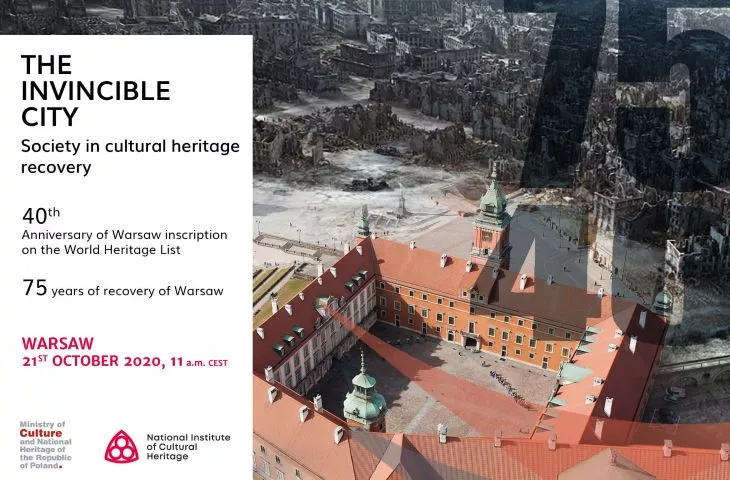The reconstruction of Warsaw's Old Town is unprecedented. The city was more than 90 percent destroyed. In the case of the Old Town, the decision was made to reconstruct the historic fabric. Although this went against the trends in reconstruction at the time, the resurrection of the historic center was meant to restore the spirit of the residents. It did just that. The effort was crowned by the inscription of the rebuilt Old City on the UNESCO World HeritageList in 1980. It is now 40 years since that historic decision.
Warsaw's Old Town is undoubtedly a symbol and one of the most recognizable places in the country. It is a must-see on the list of all school trips visiting Warsaw. It is also entirely the creation of the architects of the Capital Reconstruction Bureau. While painstakingly reconstructing the Royal Castle and the townhouses in the Market Square, they were guided by the idea of uplifting the spirits of Poles crushed by the war and the harsh post-war reality. It was a joint effort of many architects and architects, as well as many residents and residents of the capital. In 1980, the work was honored with an entry on the UNESCO World Heritage List. The commission's justification reads:
More than 85% of Warsaw's historic center was destroyed by Nazi occupation troops. After the war, the people of Warsaw undertook a work of reconstruction that led to the restoration of churches, palaces and houses that were symbols of Polish culture and national identity. This is a unique example of the complete reconstruction of a historical complex.
anniversary conference
The anniversary of this event was decided to celebrate with a conference entitled. "The invincible city. Society in cultural heritage recovery". It will be held on Wednesday, October 21. It is initiated by the Ministry of Culture and National Heritage, which has invited experts from the UNESCO World Heritage Center, the International Council on Monument Protection(ICOMOS), the International Center for the Study of the Preservation and Conservation of Cultural Heritage(ICCROM) and the National Heritage Institute to participate in this unique event.
The event is aimed at Polish and foreign specialists: architects, urban planners, historians, archaeologists, conservators, as well as representatives of local authorities, who, by participating in the debate, can draw inspiration and knowledge from the historical experience of cities such as Warsaw.
speakers from around the world
The conference will be opened by Prof. Magdalena Gawin - Deputy Minister of Culture and National Heritage, General Conservator of Antiquities, and Prof. Jadwiga Łukaszewicz - President of the Polish National Committee of ICOMOS. Speakers will include: Mechtild Rössler - Director of the UNESCO World Heritage Center, Marie-Laure Lavenir - Director General of the International Council for the Protection of Monuments(ICOMOS), Boguslaw Szmygin - President of the International Scientific Committee on Theory and Philosophy of Conservation of the International Council for the Protection of Monuments (THEOPHIL - ICOMOS).
in a gesture of solidarity
The debate was divided into two thematic panels, both conducted in English. The first entitled. "Ruins, bricks and dust. International experience of the recovery of historic cities, " will address the lessons learned in the 75 years since the reconstruction of cities after war damage and the changing relationship of preservationists versus the public in the reconstruction process. The second panel, on the other hand, is a gesture of solidarity with Beirut. In the discussion titled. "Ruins toward the future. How to plan a recovery process? Solidarity with Beirut." Universal guidelines defining the handling of heritage at the time of destruction will be presented, as well as visions for the future and new approaches to the process of restoring heritage with the support of international expert bodies.
Participation in the webinar is free, just register on the organizer's website.














